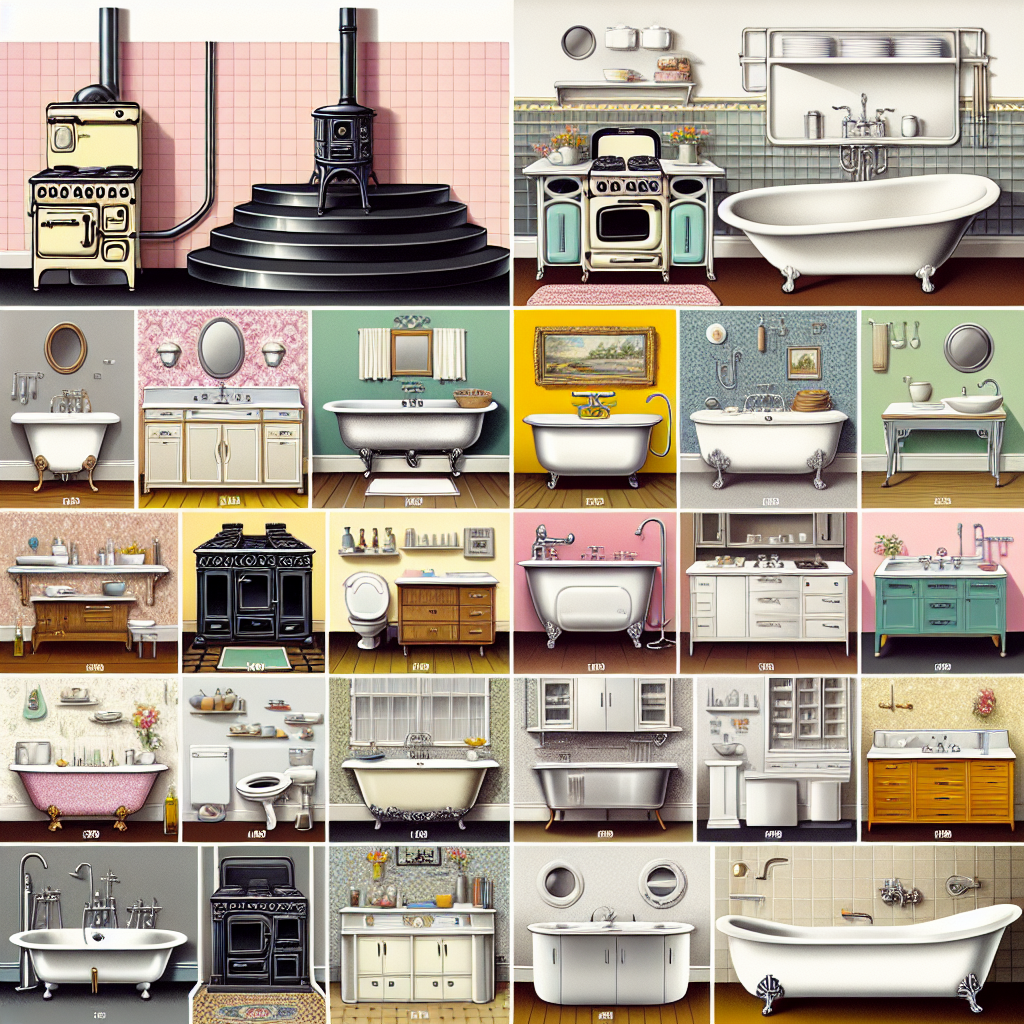A Timeless Journey: Kitchens and Baths Through the Decades
The evolution of kitchens and bathrooms over the decades is a fascinating journey that reflects broader societal changes, technological advancements, and shifts in design philosophy. From the utilitarian spaces of the early 20th century to the luxurious and multifunctional rooms of today, kitchens and baths have undergone significant transformations. This article explores these changes, highlighting key trends and innovations that have shaped these essential spaces in our homes.
The Early 20th Century: Function Over Form
In the early 1900s, kitchens and bathrooms were primarily functional spaces. The focus was on practicality and efficiency, with little attention paid to aesthetics. Kitchens were often small and cramped, with basic appliances and limited storage. Bathrooms, meanwhile, were sparse, featuring a simple bathtub, sink, and toilet.
- Kitchens: The introduction of gas stoves and iceboxes marked significant advancements, making cooking and food storage more convenient.
- Bathrooms: Indoor plumbing became more widespread, improving hygiene and accessibility.
Despite their utilitarian nature, these spaces laid the groundwork for future innovations, setting the stage for the dramatic changes that would follow.
The Mid-20th Century: The Rise of Style and Convenience
The post-war era brought about a shift in how kitchens and bathrooms were perceived. As the economy boomed, homeowners began to prioritize style and comfort alongside functionality. This period saw the introduction of new materials, colors, and designs that transformed these spaces into more inviting and personalized areas.
- Kitchens: The 1950s and 60s saw the rise of open-plan kitchens, with colorful cabinetry and modern appliances like dishwashers and electric ovens becoming standard.
- Bathrooms: Pastel colors and decorative tiles became popular, while innovations like built-in vanities and shower enclosures enhanced convenience and style.
These changes reflected a growing desire for homes that were not only functional but also aesthetically pleasing and reflective of personal taste.
The Late 20th Century: Technology and Customization
As technology advanced, so too did the capabilities of kitchens and bathrooms. The late 20th century was characterized by a focus on customization and the integration of cutting-edge technology.
- Kitchens: The introduction of microwave ovens, energy-efficient appliances, and modular cabinetry allowed for greater flexibility and efficiency.
- Bathrooms: Spa-like features such as whirlpool tubs, steam showers, and high-tech fixtures became increasingly popular, offering a luxurious retreat within the home.
This era marked a significant shift towards personalized spaces that catered to individual needs and preferences, setting the stage for the modern designs we see today.
The 21st Century: Sustainability and Innovation
In recent years, the focus has shifted towards sustainability and innovation. Homeowners are increasingly seeking eco-friendly solutions and smart technology to enhance their kitchens and bathrooms.
- Kitchens: Energy-efficient appliances, sustainable materials, and smart home technology are now standard features, reflecting a growing awareness of environmental impact.
- Bathrooms: Water-saving fixtures, recycled materials, and smart mirrors are just a few examples of how technology is being used to create more sustainable and efficient spaces.
These trends highlight a broader shift towards responsible living, with an emphasis on reducing environmental impact while maintaining comfort and convenience.
Conclusion: A Reflection of Change
The journey of kitchens and baths through the decades is a testament to the ever-evolving nature of home design. From purely functional spaces to personalized havens of style and innovation, these rooms have continually adapted to meet the changing needs and desires of homeowners. As we look to the future, it is clear that sustainability and technology will continue to play a pivotal role in shaping the kitchens and bathrooms of tomorrow. By understanding this evolution, we gain valuable insights into how our homes reflect broader societal trends and the ongoing quest for a balance between form and function.



